The "Roman" curtain is grace and practicality, a convenient way of fastening and a mechanism, ease of care and a modern look. In addition, any pattern can be applied to the curtains, including by order, which allows you to turn them into real works of art. From the moment of its appearance in the beginning of the 20th century, curtains, called "Roman", immediately became popular, and over the years did not lose their relevance.
Mounting Methods
One of the classifications is based on the mounting method.
- Mini cornice. The curtain is attached directly to the window frame. Such a fixture saves space, and is especially often used in small apartments, as well as in apartments decorated in a minimalist style. With this type of fastening, the window sill is not covered with a curtain, but remains free, and can be used as a desk, bench, shelf for books, flowers or in any other way.
- Classic mount option. Large curtains are fixed on such a cornice (standard size 1.5 x 1.8 meters). Mounted on the wall above the window. The lowered curtain adjoins the wall, and takes up less space in the room than a traditional curtain.
- Complicated. For skylights or arched windows, a special design with a beveled or curved cornice has been developed. For this type of window, the use of Roman curtains is an excellent decoration solution.
See more others options for attaching curtains to the cornice.
Types of mechanisms
Another classification is based on differences in the action of the mechanism that allows lowering and raising the product. In accordance with this, the eaves are divided into:
- option with manual lifting mechanism,
- option with electric hoist.
Usually, curtains with cord lifting are attached in this way.
In the photo on the left open control system, on photo on the right - closed.
When decorating a window with a Roman curtain, you need to imagine how convenient it will be to use it. And to evaluate this convenience, a classification based on the private details of the lifting device is suitable. In accordance with it, the mechanisms are divided into the following types:
- RopeHe is a cord lifting mechanism. This is the most practical and economical look. Applied in cases where the fabric of which the curtain is made is not too heavy. Very dense and heavy materials can damage the mechanism.
- Rotary chain the mechanism is based on rotating blocks and a dense cord, the design is set in motion by moving the chain. This allows you to stop the mechanism in any position, respectively, the curtain can be fixed at any height, which is very convenient.
- Automatic control system - the most convenient, but at the same time the least budgetary type. By pressing the button on the remote control, you can open or close the curtain without getting up.
Design
Roman curtains have many advantages over ordinary ones, but only if you have correctly selected the mechanism in accordance with your needs. And for the right choice, you need to have a good idea of how this mechanism works and what parts it consists of.
Any cornice, regardless of the type of lifting mechanism, contains:
- profile (usually made of metal),
- plumb for the canvas,
- lifting gear
- pulling mechanism
- additional elements (hooks, chains, Velcro - depending on what kind of pulling and lifting mechanisms are used).
Various versions of Roman curtains can be additionally equipped with the following systems:
- An open hoist with a chain mechanism that provides tight winding of the curtain web on the shaft, fixation occurs with hooks on the sides and plastic hooks that are included in the package.
- Spring mechanism for lifting the web with open or closed guides, used for inclined windows, for example, in attics.
In the photo on the left chain-cord hoist design, pictured right - design of the chain-belt mechanism.
Selection recommendations
Due to the fact that the design of the Roman curtains is seriously different from the usual version, these differences must be taken into account when choosing fabrics for curtains, their width and height.
- It is not recommended to use curtains with a width of more than two and a half meters, since a mechanism of this length will not withstand constant loads, and will quickly break.
- A cloth that is too long will have a lot of weight even if fairly lightweight fabrics are used, therefore, in two-room halls of your own houses you should not use one curtain rail for two window openings - the length of the curtain can not be more than 4.5 m!
- Very dense and heavy fabrics should be used only if the cornice has the necessary strength and reliability.
When decorating a window with a Roman curtain, the main task is the correct choice of a cornice, and it needs to be selected depending on which canvas will be used. Its strength should be such as to withstand the weight of the lifting mechanism and the web, and still have some strength margin. Strength can be increased with the help of an additional fastening point installed in the middle of its length. This will evenly distribute the load and reduce sagging.
Benefits
Consider the main differences between Roman curtains and ordinary curtains, to understand why they got such popularity.
- Mounting the curtains can be almost anywhere, even very narrow. They are suitable for decorating any kind of windows - non-standard openings of any geometry, convenient for windows in bay windows, and there is simply no alternative for skylights.
- Roman curtains in the interior will not only help to create a unique atmosphere, they are also able to provide full blackout if you decide to arrange a home theater in the room, reliably protect the bedroom from morning sunlight, and at the same time do not interfere with the access of daylight if you raise them completely.
- The canvas can be made of any kind of fabric: organza, cotton, silk, wool, velvet, tapestry, velor. Synthetic fabrics, and even film products, are also used.
Where are the Roman blinds attached?
The standard task is to protect the room from ultraviolet radiation and privacy from ill-wishers. But if we are talking about Roman curtains, you can implement it by hanging them:
- On the sash. In this case, when the window is opened, the entire window opening that this shutter opens opens.
- To the window frame. This means that you cannot open the sash if you do not fold the Roman curtain.
- On the wall. In this case, the presence of a cornice is assumed. The entire opening closes, including slopes and windowsill.
- To the ceiling. Roman curtains turn into a decorative element attached to the ceiling, and which can go down to the floor.
Each type of mount has a number of features. There is nothing complicated, but basic knowledge and building skills will be required.
Correct Installation Instructions
Whatever method is chosen, the main thing is to correctly and evenly mark out the fasteners so that the Roman curtains hang vertically, perpendicular to the ceiling and floor. There is no definite answer to the question of how Roman curtains are attached. Technology depends on the chosen method.
On the picture scheme of fastening the product to the ceiling or wall.
How to fix on self-tapping screws?
The technology involves screwing the structure with screws directly to the ceiling or wall. The curtains are attached in accordance with the step-by-step instructions:
- A guide is applied to the surface, and marks are placed at the mounting locations.
- Marking holes are drilled. Moreover, their diameter should not be larger than the diameter of the thread of the screw.
- Screws are screwed into the mounting nests. In this case, someone needs to keep the curtain along the markings.
Installation instructions are also included. After completing the procedure, you need to check the lifting mechanism.
How to hang on mounting brackets?
In this case, the algorithm of actions looks like this:
- The level is determined by the horizontal on which the places for drilling are measured using a tape measure. To maintain the correctness of geometric shapes, a strip is drawn parallel to the windowsill. Points under the holes are marked with a pencil, pen or marker.
- Drills with a drill drill holes for self-tapping screws. A feature of concrete structures is the use of a hammer drill and a drill with a winning tip. It is important not to get into the fittings. Bricks, wood and other, less strong materials are drilled with a conventional tool.
- Self-tapping screws are screwed into the plastic dowels embedded in the holes, which come complete with Roman curtains, which are attached using special brackets.
If there is no desire or opportunity to hammer a wall, make holes in it, you can refuse this technology, and use other methods.
Mounting options without drilling
Special brackets are available for sale that allow Roman curtains to be fixed directly to the sash. And some models of Roman curtains have special Velcro in the package.
Installation with universal fasteners for opening flaps
In this case, they are attached as follows:
- Marking is applied (on the sash and the curtain guide).
- Universal mounts are installed.
- Magnets are attached to the curtain guide with glue.
- The whole structure is suspended by magnets.
The advantages of this method are the ease of dismantling for cleaning curtains from dust and washing windows. Minus - the inability to install heavy, massive curtains.
An alternative to this method is the use of a construction stapler. In this case, the curtains are shot by the brackets directly to the sash. But so they are attached only to wooden structures. Metalplastic construction stapler will not break.
How to hang the curtain with Velcro?
For this, you also need to pre-mark the mounting points. After this, the step-by-step procedure looks like this:
- One strip of Velcro cut to the size of the blinds is attached to the surface of the wall, ceiling, frame or sash using a construction stapler.
- Another strip of textile Velcro is sewn to the Roman curtains. The main thing is that the strips match. You can do this across the entire width of the strip.
- Curtains are attached by pressing two Velcro components.
The advantages are the same - easy installation and dismantling during the period of major cleaning in the room.
Walkthrough video
For convenience and clarity, a video was shot that details all the methods and methods of fastening. It also talks about features and moments that require attention and accuracy.
How to assemble a Roman curtain?
In any case, already assembled Roman curtains are attached. This means that before starting work on fasteners, you must do the following:
- Planks are set, the lower weight, including.
- Rings are sewn in the places where the trims are installed.
- Above each row of rings, guide rings are attached to the kenris bar.
- Threads are threaded through the rings, gathered in one rope.
At the end, the locking assembly is knitted or a carbine is installed. This is so that the rope does not pop up. Work must be done on a horizontal surface, as if Roman curtains were already installed so that the threads had the required length.
Window decoration with a Roman curtain is most often used in cases where it is impossible to hang ordinary curtains. And then the cornice is fixed directly to the window opening on its outer side.
Mounting the cornice on the frame is best done with the help of special “Velcro”, in which case you will not need additional tools and materials. Thus, we see that the Roman curtain is the most versatile option for decorating any type of window in any interior. They can not only become a decoration of a room, but also increase the functionality of using windows and the space surrounding them.

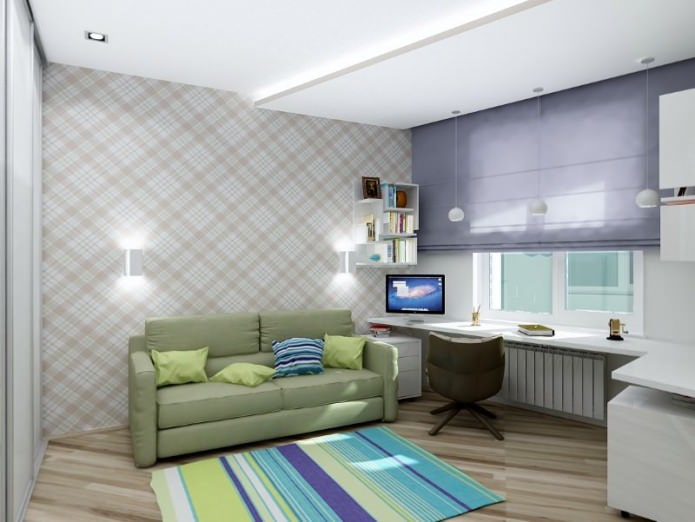
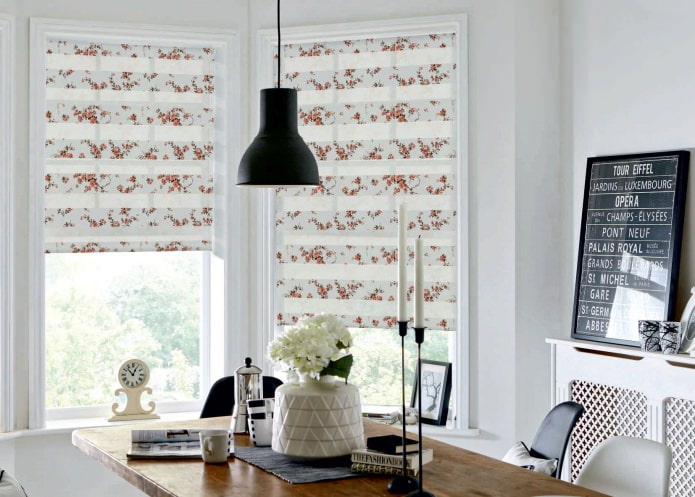
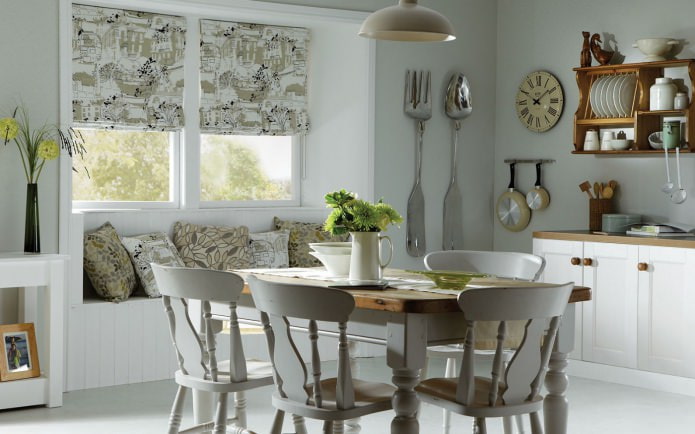
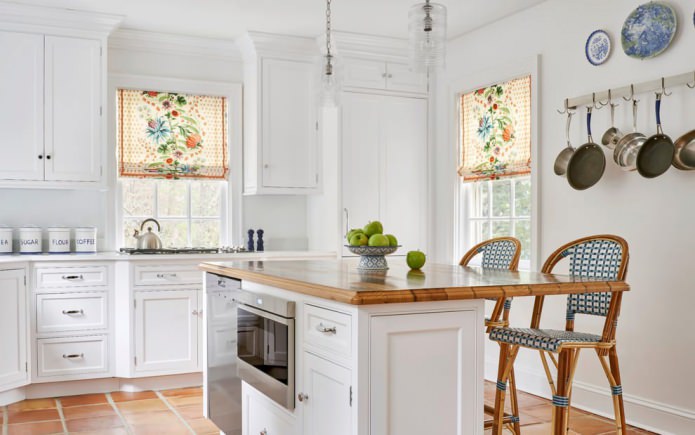
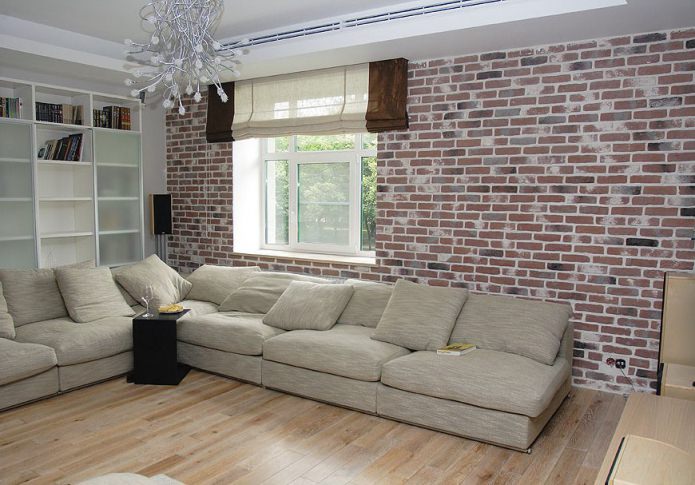
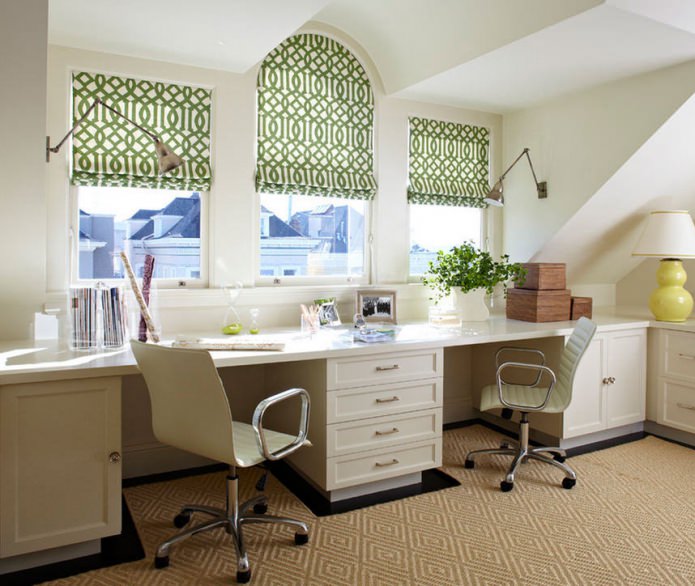

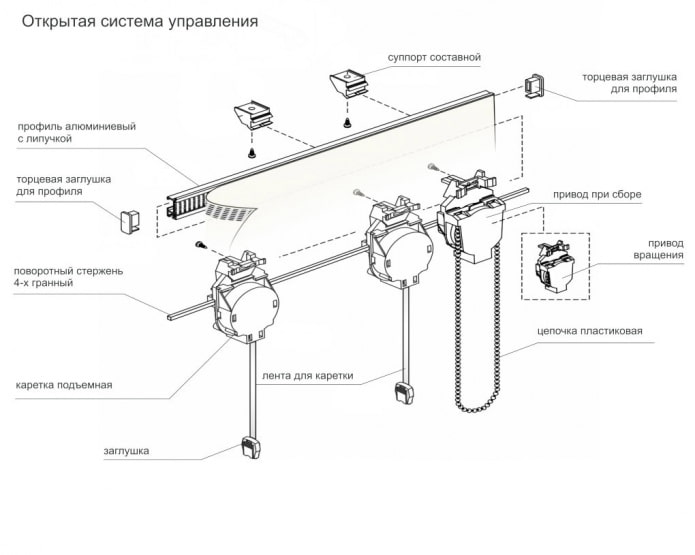
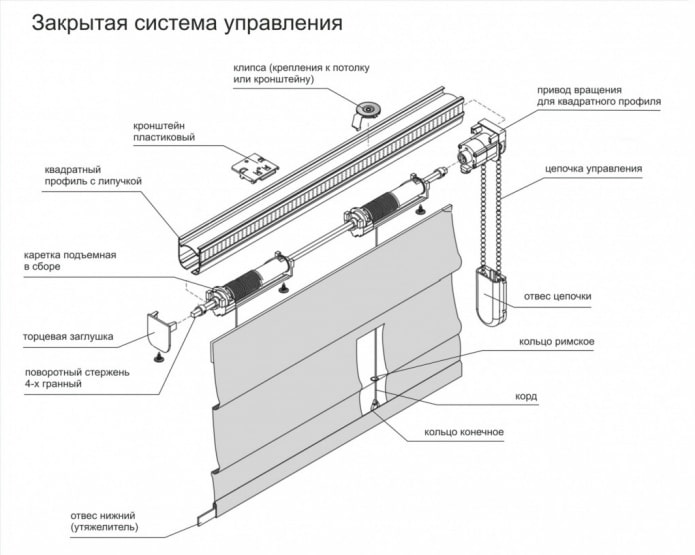
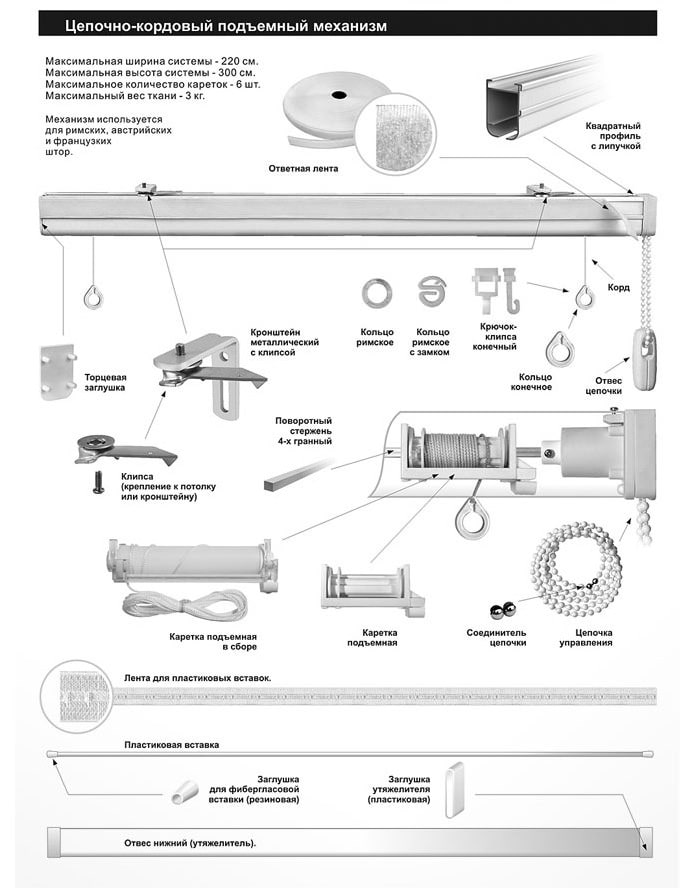
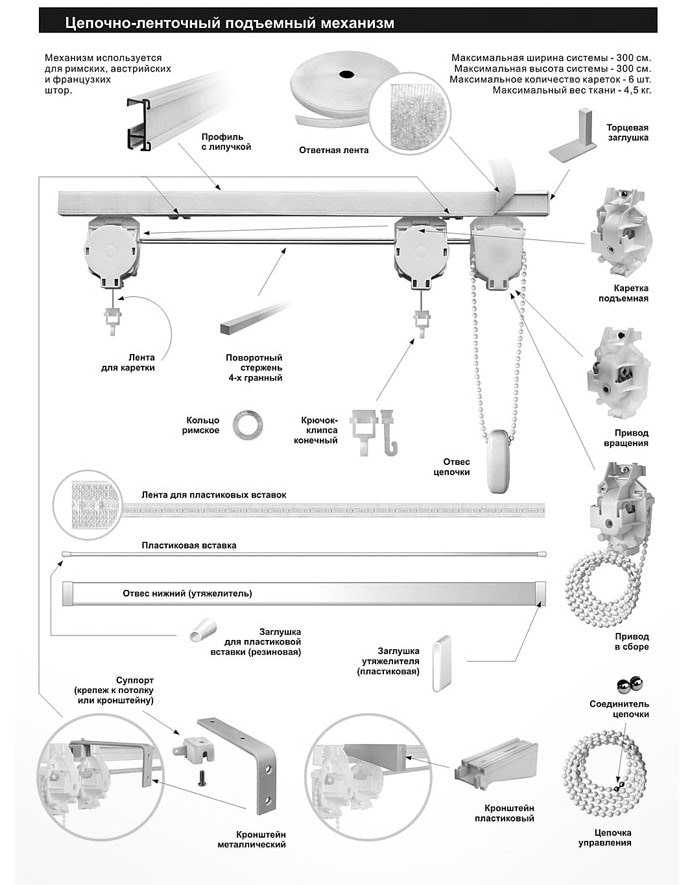

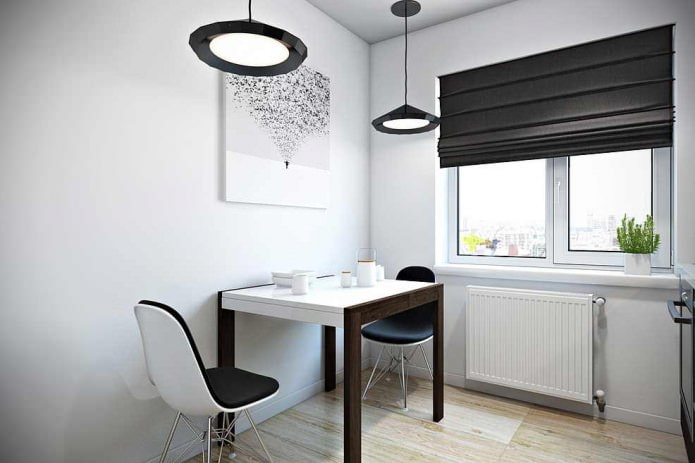

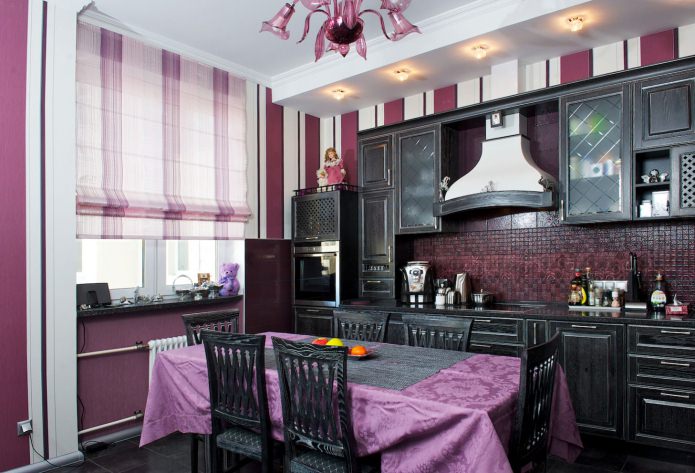


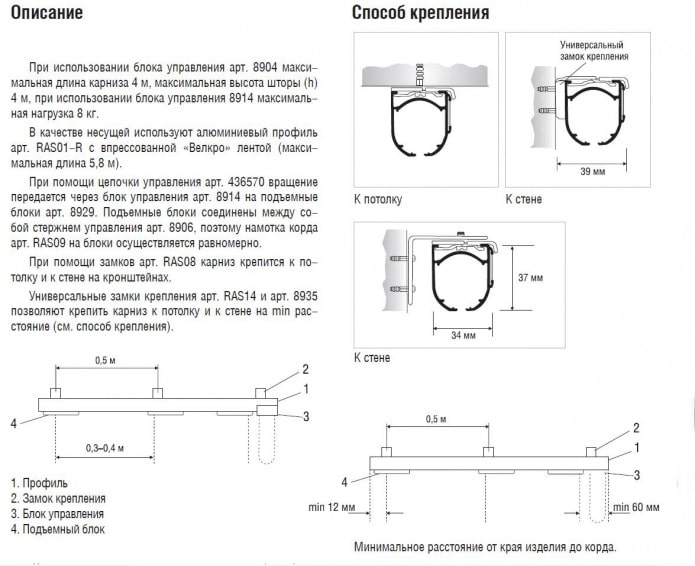
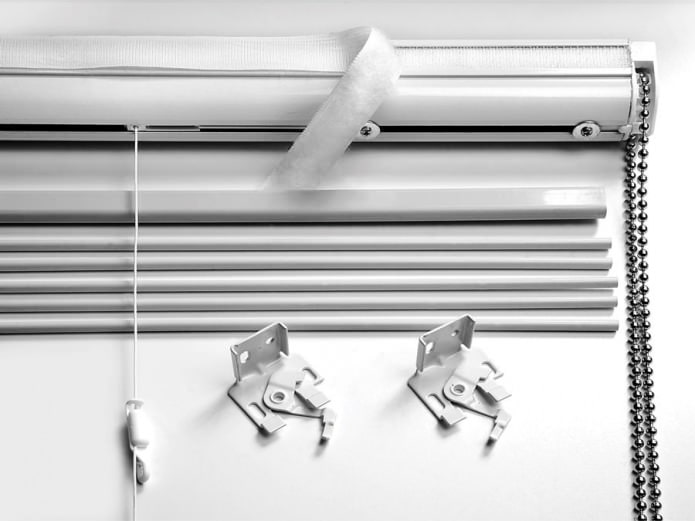

 Top 10 Trends in Interior Design 2020
Top 10 Trends in Interior Design 2020 Rating of cheap TVs with Smart-TV
Rating of cheap TVs with Smart-TV New Year's LED garlands on AliExpress - we disassemble while it is hot so that the house is bright
New Year's LED garlands on AliExpress - we disassemble while it is hot so that the house is bright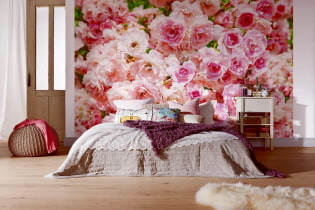 Wall mural with flowers in the interior: living wall decor in your apartment
Wall mural with flowers in the interior: living wall decor in your apartment Gray sofa in the interior: views, photos, design, combination with wallpaper, curtains, decor
Gray sofa in the interior: views, photos, design, combination with wallpaper, curtains, decor Interior in peach tones: meaning, combination, choice of finishes, furniture, curtains and decor
Interior in peach tones: meaning, combination, choice of finishes, furniture, curtains and decor